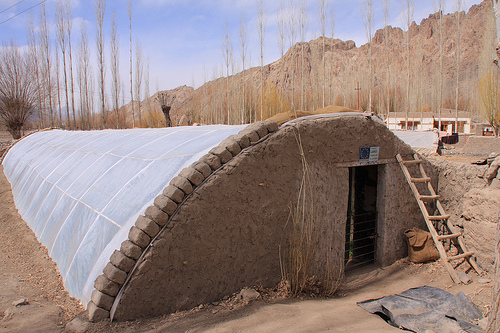GERES Insulated Greenhouses
December 25, 2011 by Owen Geiger
The Himalayan winter isn’t kind to vegetables. Temperatures as low as -25 centigrade and low rainfall mean that crops grow for only 90 days a year. In winter the local population has to rely on dried or expensive, imported food.
Yet in such a harsh environment, the climate also offers possibilities. The sun shines on average for 300 days a year. And it is from that sunshine that the Groupe energies renouvables, environnement et solidarités (GERES) have developed a solution to the shortage of fresh produce.
Their solution is a greenhouse – or to be more precise 586 greenhouses by 2008 supporting over 50,000 people by the sale and barter of produce. The new greenhouses are designed both to absorb as much sun as possible via heavy duty UV-stabilised polythene on their south side, and to retain the heat in heavy walls with thick insulation. A network of 64 greenhouse owners acts as a local resource to promote and support construction.
Greenhouses cost US$600 with owners providing some of the materials for the walls and roof and arranging construction based on GERES’ design. However, local surveys suggest a 30% increase in income as more produce is grown – spinach and strawberries are very popular – with the total cost paid back in four years.

No comments:
Post a Comment